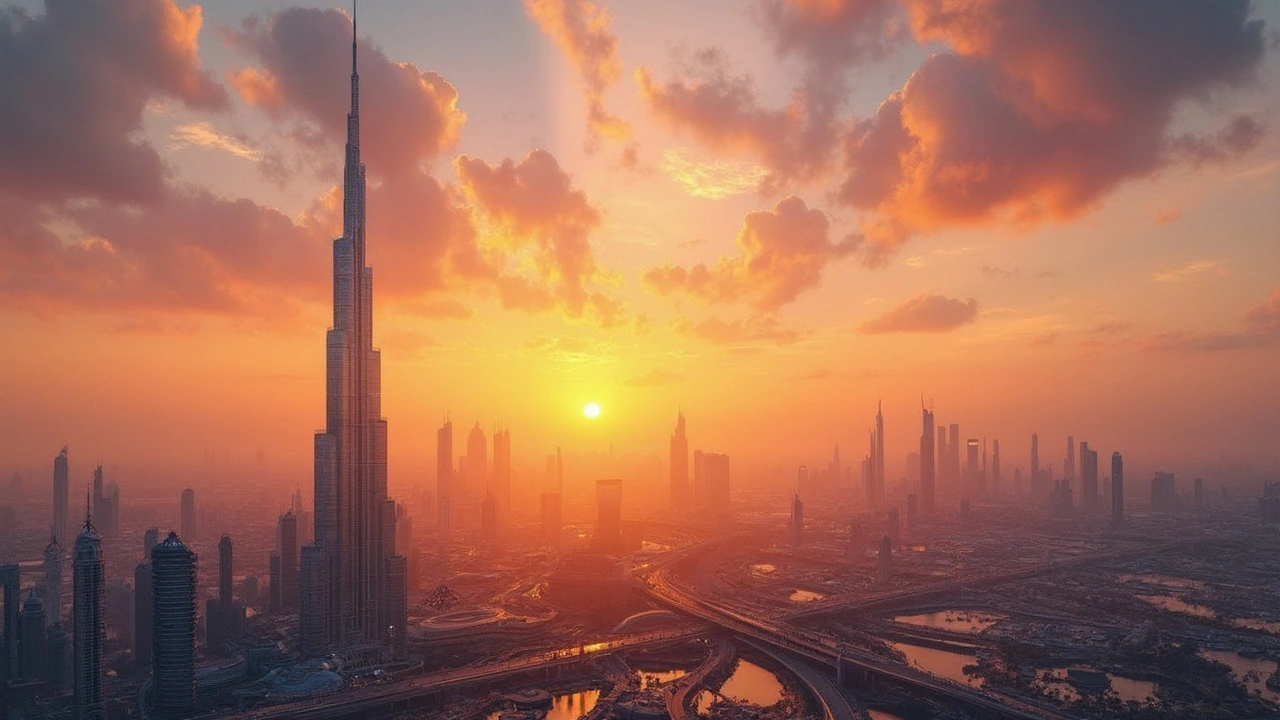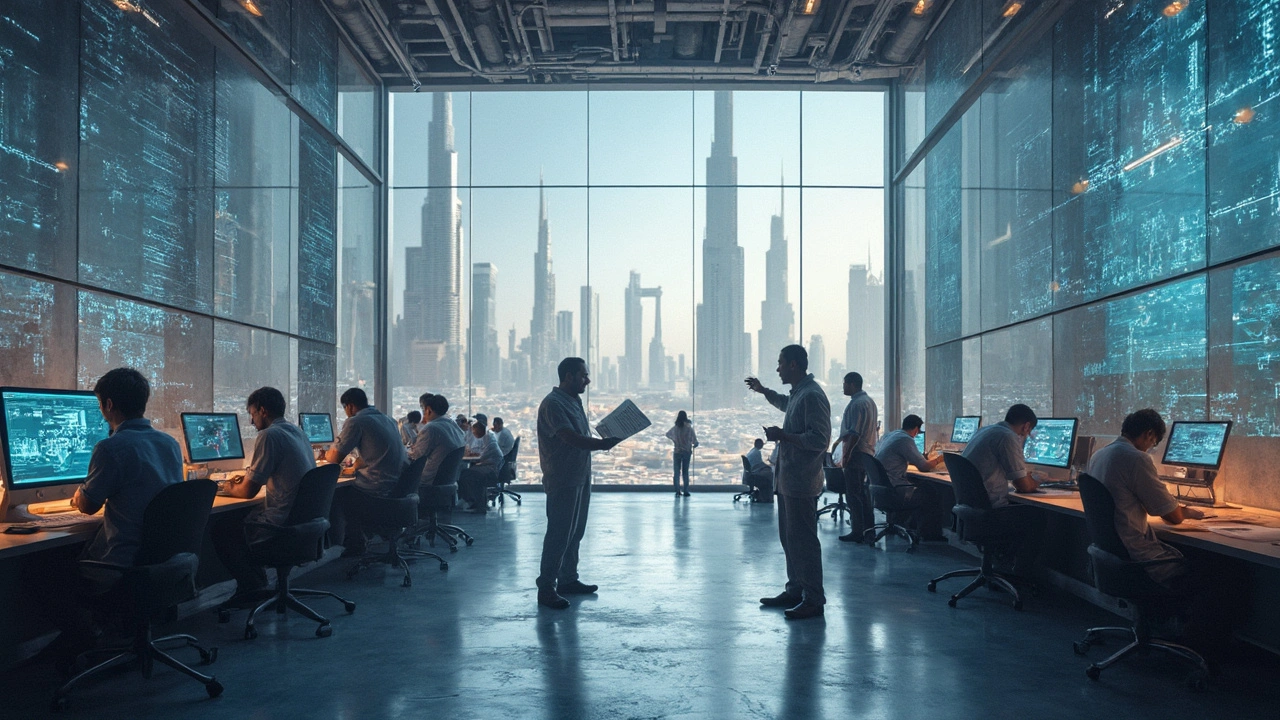Burj Khalifa: A Glimpse into the Future of Skyscrapers

The Burj Khalifa isn't just the tallest building in the world; it's a beacon of architectural ambition, pushing the limits of what skyscrapers can achieve. Ever gazed upon its dizzying height and wondered how it even stands? Well, it involves some pretty mind-boggling engineering tricks and a deep dive into innovative design strategies. Let's unpack what makes the Burj Khalifa a true trailblazer in the world of tall buildings.
You might think that towering over the Dubai skyline comes with its challenges, and you'd be spot on. Engineers had to think outside the box, meticulously balancing aesthetics with practicality. From its Y-shaped design that offers both stability and stunning views to the cutting-edge materials used in its construction, every element is carefully planned. This isn't just design for design's sake; it's innovation with purpose.
But why should you care? Well, keeping up with such pioneering structures can give us insights into where urban design is heading. As cities get more crowded, the need for vertical living and sustainable building solutions becomes immense. The Burj Khalifa isn't just an isolated marvel; it's a glimpse into tomorrow's skyline. Stay tuned as we delve into what makes this skyscraper not only tall but undeniably smart.
Defining the Burj Khalifa
When it comes to world-famous buildings, the Burj Khalifa certainly grabs a top spot. Towering at a staggering height of 828 meters (2,722 feet), it clinches the title as the tallest building on the planet. Located in the vibrant city of Dubai, United Arab Emirates, this skyscraper redefines what we know about heights and the possibilities in urban architecture.
Designed by the renowned architectural firm Skidmore, Owings & Merrill, the Burj Khalifa was completed in 2010. Its design isn't just for show; the Y-shaped floor plan is cleverly made to boost stability while giving residents and visitors incredible views in almost every direction. The building contains a whopping 163 floors above ground, with two additional floors underground.
Materials and Design
Building the Burj Khalifa wasn't a walk in the park. Engineers and architects needed cutting-edge technology and materials that could withstand extreme weather. Ever wondered what it's made of? Well, they used high-performance concrete and specialized glass designed to handle desert temperatures that can reach over 50 degrees Celsius. This mix of new-age tech and age-old wisdom ensures both durability and sustainability.
Not Just a Building
Beyond its impressive height, the Burj Khalifa functions as a small vertical city. It houses luxury apartments, corporate offices, Armani Hotel rooms, and even a restaurant and observation decks. It's not just about touching the sky; it’s about redefining how space is utilized in urban settings.
Interesting Stats
If you're into numbers, you'll find these figures captivating. For starters, it took over 110,000 tons of concrete, 55,000 tons of steel rebar, and approximately 22 million man-hours to complete. And the elevator systems? They are among the fastest in the world, whisking you up at 10 meters per second.
| Fact | Details |
|---|---|
| Height | 828 meters (2,722 feet) |
| Floors | 163 above ground, 2 underground |
| Construction | 22 million man-hours |
| Completed | 2010 |
So, what's the takeaway? The Burj Khalifa isn't just about stretching high; it sets the bar for what skyscrapers can achieve—whether that's integrating luxury, technology, or eco-friendliness. Keep it on your bucket list if you haven't visited yet!
Benefits and Impact
The Burj Khalifa isn't just another skyscraper; it's a powerhouse of economic and social benefits that has put Dubai on the map globally. Its presence has significantly boosted tourism, drawing millions of visitors annually eager to marvel at this architectural wonder. It's a major reason why Dubai is now a must-visit for travelers worldwide.
Economically, the tower has been a game-changer. The influx of tourists and business professionals has driven up demand for nearby hotels, restaurants, and entertainment venues, spurring local businesses. Commercial real estate around the area has experienced a boom, thanks in no small part to the lure of the Burj.
Promoting Urban Development
On the urban planning side, the Burj Khalifa has acted as a catalyst for new infrastructural developments. It has encouraged sustainable practices in construction and operation, emphasizing energy efficiency. This focus on sustainability is critical as cities globally strive to reduce carbon footprints.
Inspiring Future Designs
Architecturally, it's inspired future skyscrapers to dream big, quite literally. With a solid base of innovative technology and design, it's clear that the future of skyscrapers is about mixing height with eco-friendly solutions. This emphasis on sustainable urban icons is something we've all been looking forward to, and the Burj is leading the charge.
The social impact is equally noteworthy. The Burj has become a symbol of what can be achieved with grit and vision. It has brought a sense of pride and ambition not only to Dubai but to the Middle East. It stands as a testament to human ingenuity, showing the world that the sky's the limit.

Diverse Architectural Features
When talking about the Burj Khalifa, you can't ignore its incredible architectural features that turn heads worldwide. Standing at a whopping 828 meters, this gigantic tower isn't just about height; it's about the genius of design that makes this possible.
Y-Shaped Design
One of the coolest things about the Burj Khalifa is its unique Y-shaped structure. Why go for this form? It's all about distributing the weight and cutting down with those pesky wind forces. That's right, the building's shape isn't just for show. It actually helps stabilize the skyscraper during high winds, which are pretty common at its height.
Cladding Materials
What you see gleaming from miles away is its shiny cladding made up of reflective glazing, aluminum, and textured stainless steel spandrel panels. Not only does this give the Burj Khalifa its shimmering look, but it also helps in temperature regulation. Dubai gets hot, and these materials play a crucial role in keeping the insides cool and comfy.
Observation Decks
Up for some breathtaking views? At the Burj Khalifa, the world's highest outdoor observation deck is waiting for you at levels 124 and 148. These decks aren't just about looking out; they're designed to give you a 360-degree view of the entire city and beyond.
Impressive Elevators
Going up and down wasn't left to traditional means, either. The Burj Khalifa's elevators are amongst the fastest in the world, zooming at a speed of 22 miles per hour. Experiencing such a ride from the ground to the top is nothing short of exhilarating.
Some Amazing Stats
Did you know? The materials used for the Burj Khalifa's construction are not only efficient but massively impressive in sheer numbers:
| Facility | Details |
|---|---|
| Concrete | 330,000 cubic meters |
| Steel | 39,000 tonnes |
| Cladding Panels | 26,000 glass panels |
Amazing, right? These numbers tell you just how massive an undertaking constructing this tower was. Each feature of the Burj Khalifa is carefully crafted, acting as a benchmark for skyscrapers globally.
Future of Skyscrapers
Think the Burj Khalifa is as tall as it gets? Think again. The race to build higher, more sustainable skyscrapers is on, and architects are pushing the envelope in mind-blowing ways. The next generation of skyscrapers isn't just about height; they're about how we integrate them into our lives and ecosystems effectively.
The key trend shaping the future of skyscrapers is sustainability. With urban populations booming, cities need to be smarter about how they expand vertically. Future towers are likely to focus on reducing carbon footprints, with innovative technologies like vertical gardens and wind turbines becoming standard features.
Energy Efficiency
Today's designers are focusing a lot on energy-efficient systems. Buildings like the Burj Khalifa pave the way with elements like double-layered glass to keep the heat out and water harvesting systems to save resources.
Smart Living Spaces
Besides just being tall, future skyscrapers will be smart. Imagine living in a building that adjusts the indoor climate based on weather forecasts or a system where elevators are super-efficient, reducing wait times and energy usage. We're talking about spaces that not only house people but also 'think' for them.
Materials and Construction
Engineers are experimenting with new materials, including carbon fiber and advanced composites, which are lighter yet stronger than traditional steel. This allows for more height without the literal weight bearing down. And modular construction techniques speed up the process and bring down costs.
Future on the Horizon
Various projects are already in the pipeline, with plans to surpass the current height records. The Jeddah Tower in Saudi Arabia is a known contender, projected to be over a kilometer tall. Could buildings be space elevators next? Only time will tell.
So, what can you take away from this? While the Burj Khalifa is remarkable, it's probably just an overture to a more significant architectural symphony that's still unfolding.